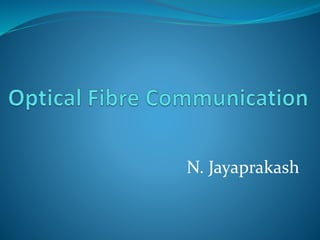This document provides an overview of optical fiber communication topics including:
1. Fundamentals such as the basic components of an optical communication system and advantages of optical fiber over copper wire.
2. Types of optical fibers including single mode, multi-mode, step index, and graded index fibers. It describes the principles of total internal reflection and modal dispersion.
3. Additional optical fiber topics like construction and common components, parameters to evaluate fiber performance such as attenuation and dispersion, and basic test instruments.



























































